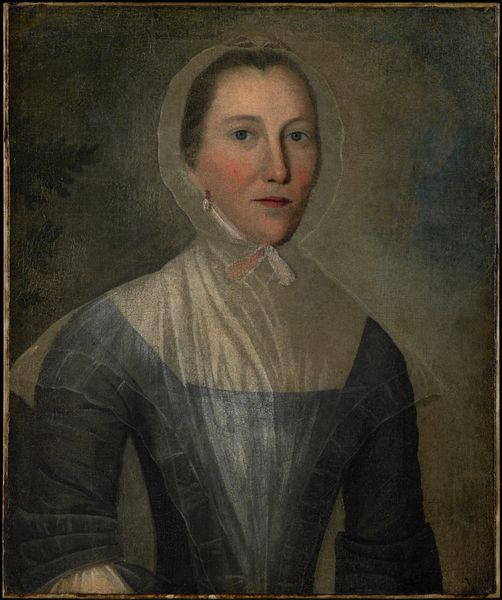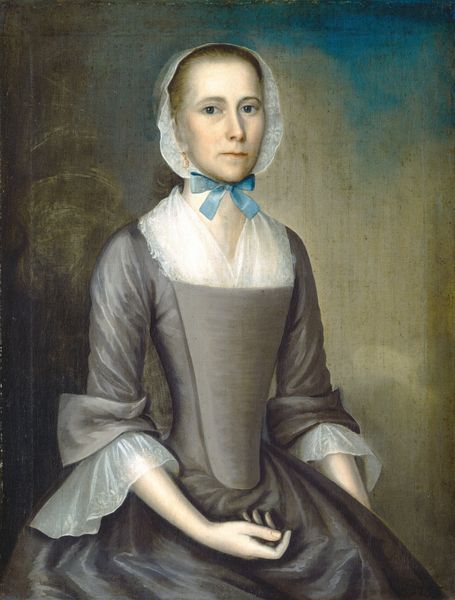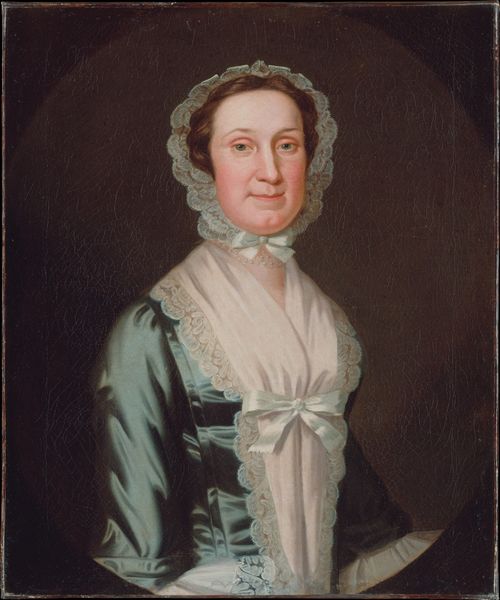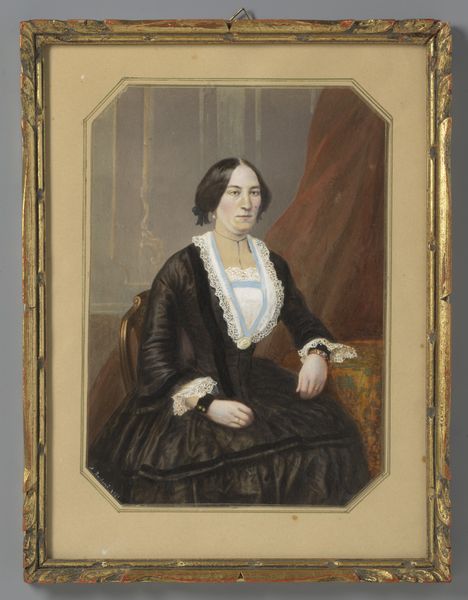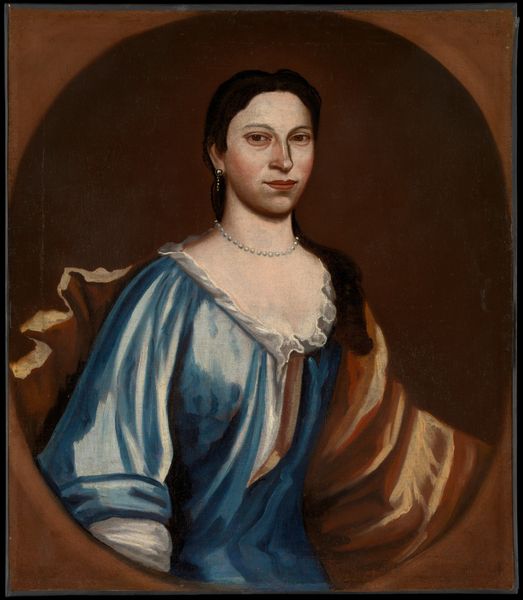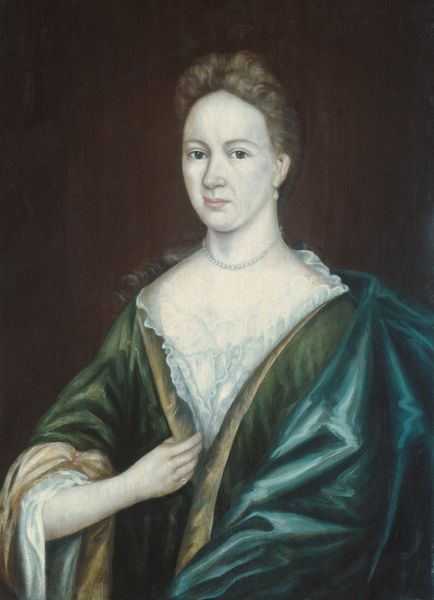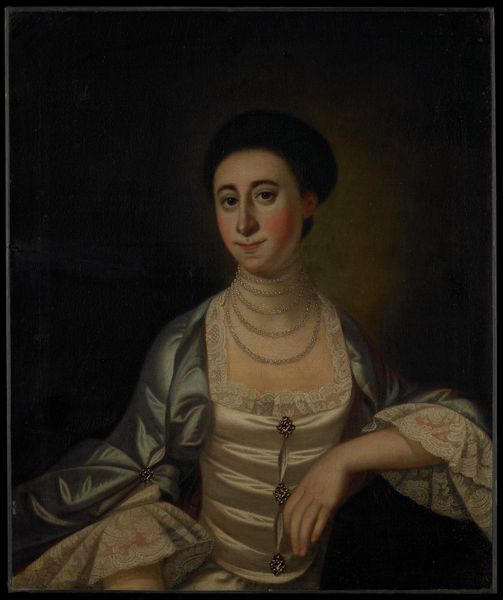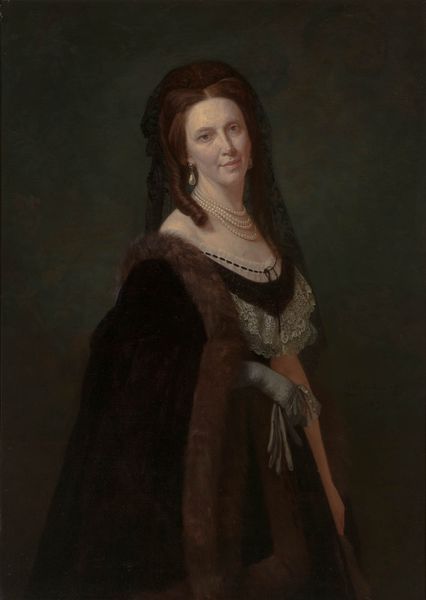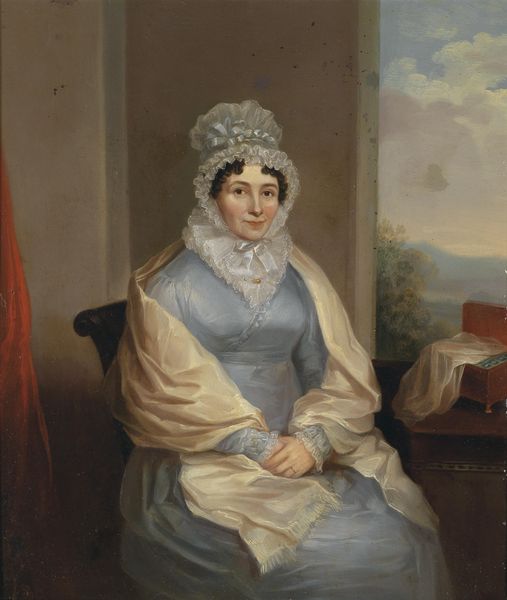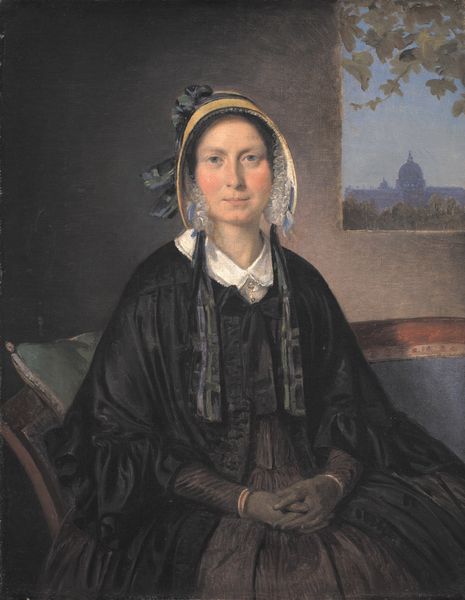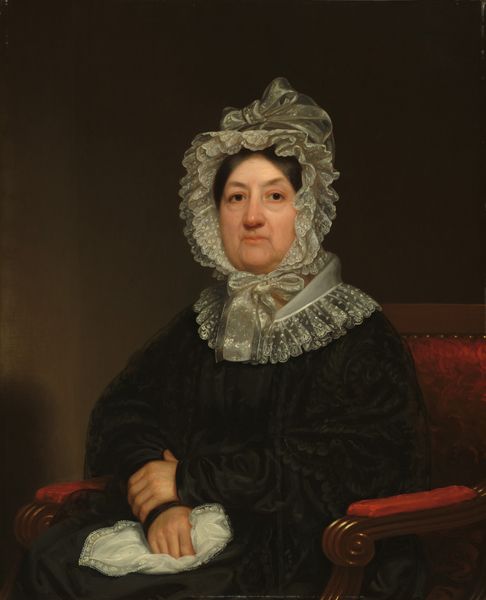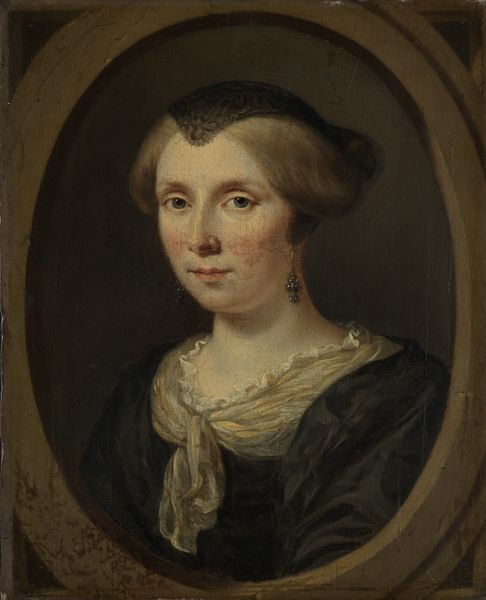
painting, oil-paint
#
portrait
#
painting
#
oil-paint
#
history-painting
#
academic-art
#
realism
#
rococo
Dimensions: 36 3/4 x 30 in. (93.3 x 76.2 cm)
Copyright: Public Domain
John Hesselius painted Mrs. Richard Galloway in oil on canvas sometime in the mid-18th century. Oil paint is a binder of pigment and drying oil, typically linseed, and canvas is woven from fibers like linen. These materials have a long art history, but here they also speak to the global trade networks of the time. Consider the source of Galloway's dress fabric: silk, likely produced in Asia. This material displays her wealth, enhanced by the labor of the enslaved people who generated it, and of the artist, who translated this textile into paint. Note the meticulous brushwork, creating luminous effects and textures. Hesselius carefully built up layers of paint, manipulating its viscosity to mimic silk’s sheen. The painting's value lies not just in its skilled execution, but in its ability to convey status and social standing. By understanding the materials and processes involved, we recognize how the work reflects economic and political structures. The portrait is not just a likeness, but a carefully constructed image of power, labor, and consumption.
Comments
No comments
Be the first to comment and join the conversation on the ultimate creative platform.
